Diabetes Insipidus - Diabetes Insipidus Nature Reviews Disease Primers
Diabetes insipidus DI is a disease process that results in either decreased release of or response to antidiuretic hormone ADH also known as vasopressin or AVP which can cause electrolyte imbalances12 There are two types of diabetes insipidus central and nephrogenic and each has congenital and acquired causes. Diabetes insipidus DI is an uncommon condition in which the kidneys are unable to prevent the excretion of water.
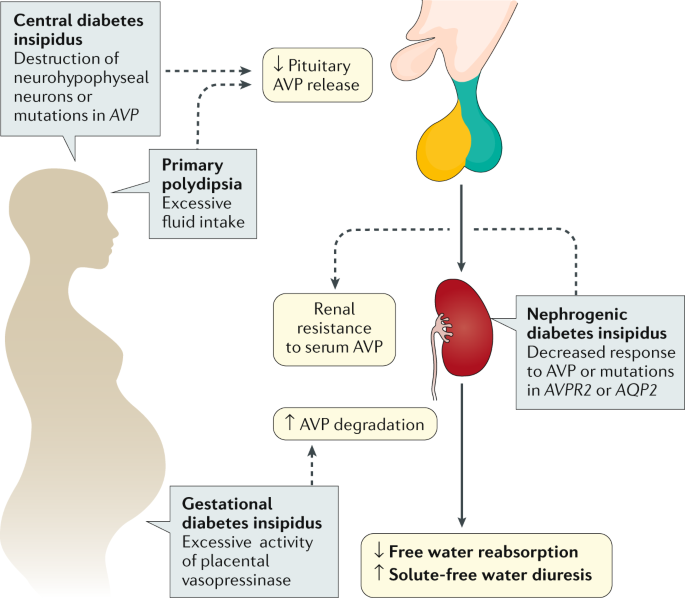
Diabetes Insipidus Nature Reviews Disease Primers
Once central diabetes insipidus CDI has been diagnosed every effort should be made to reveal its underlying cause.
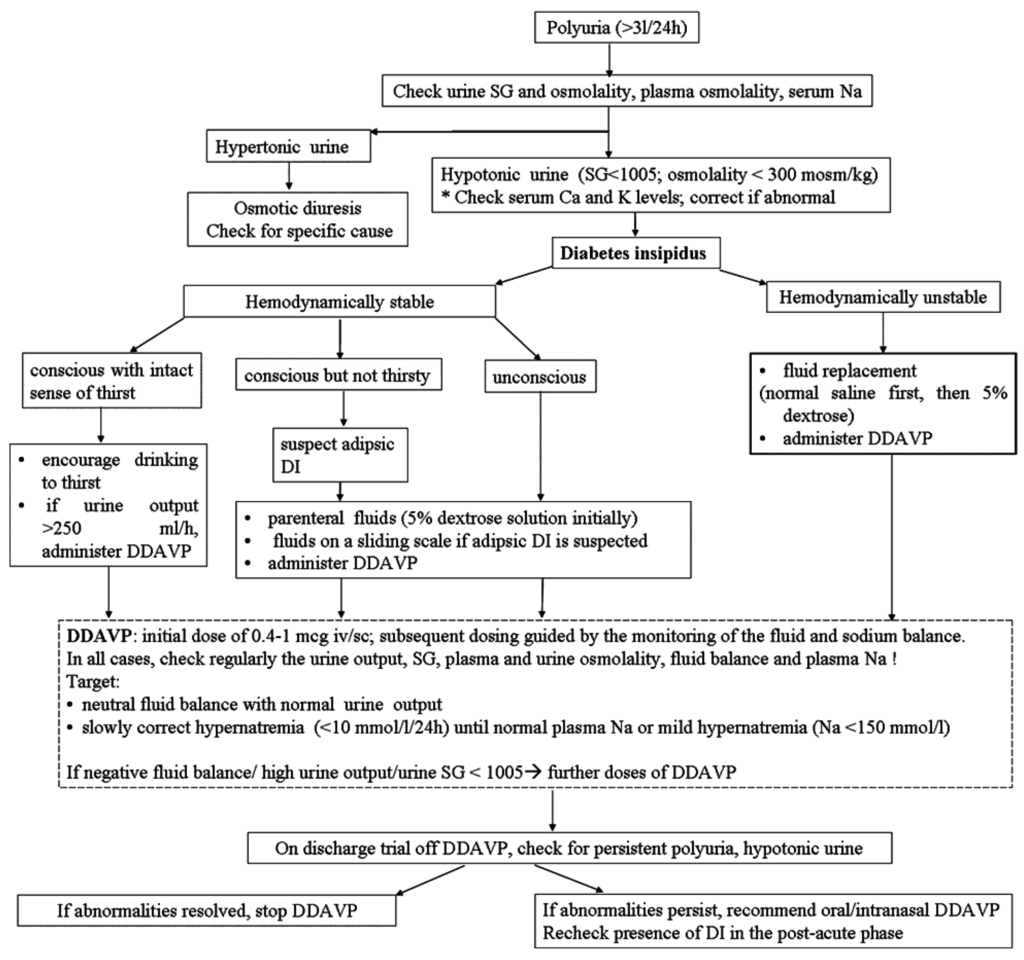
Diabetes insipidus. But today we can use natural treatment to remedy our problems concerning diabetes. Autoimmune CDI should be considered in the differential diagnosis of idiopathic CDI and also of mass lesions of the sella region. This review is about diabetes insipidus which is entirely different from diabetes mellitus.
Diabetes insipidus often shortened to DI is a rare form of diabetes that is not related to blood sugar-related diabetes mellitus but does share some of its signs and symptoms. Il sagit dune production excessive durine dépassant les 3 litres par jour et pouvant atteindre jusquà. An autoimmune etiology of CDI was first suggested in 1983 by the detection of autoantibodies to hypothalamic vasopressin-producing cells AVPcAb in.
Read on to find out more about what diabetes. It is secreted by the hypothalamus a small gland located at the base of the brain and stored in the pituitary gland and then. Central and nephrogenic DI are usually acquired but genetic causes must be evaluated especially if.
These features are also present in most cases of diabetes mellitus. The blood sugar level is normal in persons with diabetes insipidus sugar however their kidneys could not control fluid in the body. Central DI due to reduced synthesis or release of arginine vasopressin AVP from the hypothalamo-pituitary axis.
Diabetes insipidus is rare with a prevalence of 1 in 25 0002 Central diabetes insipidus usually results from pituitary pathology3 either as a result of infiltrative or inflammatory pathology or following surgery for a pituitary tumour but may also be due to a congenital defect in the production of arginine vasopressin3 Nephrogenic diabetes insipidus is usually caused by electrolyte. Gestational diabetes insipidus usually goes away after the baby is born but may return if the mother becomes pregnant again. Diabetes insipidus is simply excessive urination polyuria and complications thereof caused by an antidiuretice hormone called a vasopressin.
Normally the antidiuretic hormone controls the kidneys output of urine. Diabetes insipidus is a condition that results from insufficient production of the antidiuretic hormone ADH a hormone that helps the kidneys and body conserve the correct amount of water. And nephrogenic DI due to renal insensitivity to AVP.
Their names are similar but the only things they have in common is that they make you thirsty and make you pee a lot. However untreated both DI and diabetes mellitus cause constant thirst and frequent urination. Diabetes Insipidus National Kidney and Urologic Diseases Information Clearinghouse US.
Diabetes insipidus DI is a disorder characterised by polydipsia polyuria and formation of inappropriately hypotonic dilute urine. It can also be caused by a defect in the genes a high level of calcium in the blood hypercalcemia or kidney disease. To make up for lost water a person with DI may feel the need to drink large amounts.
People with this disease produce excessive amounts of urine which can result in severe. That is the only difference between diabetes mellitus and diabetes insipidus. Central DI results from a deficiency of the hormone arginine vasopressin AVP in the pituitary gland or the hypothalamus whereas nephrogenic DI results from resistance to AVP in the kidneys.
Extreme thirst polydipsia peeing a lot even at night polyuria In very severe cases of diabetes insipidus a person can pee up to 20 litres of urine in a day. Diabetes insipidus is a rare condition that affects a persons ability to regulate their fluid level. Diabetes insipidus DI is a rare disease that causes frequent urination.
There is a passage of large volumes of dilute urine less than 300m. DI is not the same as diabetes mellitus types 1 and 2. This can be caused by a reaction to a medication often lithium.
Diabetes mellitus and diabetes insipidus that includes both type 1 and type 2 diabetes are not related but both conditions create a constant thirst and frequent urination. Diabetes insipidus DI is a rare disorder that differs greatly from the familiar type 2 and type 1 diabetesDI happens when your body lacks enough hormones to signal to your kidneys to hang on. Most people with diabetes insipidus can prevent serious problems and live a normal life if they follow their health care professionals.
Either way the result is the loss of too much water in the urine leading to the characteristic symptom of excessive thirst. Diabetes insipidus is a different disease from diabetes mellitus. Diabetes insipidus DI is a disorder characterized by excretion of large amounts of hypotonic urine.
Dipsogenic diabetes insipidus is not related to ADH and is caused. Diabetes insipidus is not related to diabetes but it does share some of the same signs and symptoms. There are various forms of diabetes insipidus Theforms of diabetes insipidus are categorised by cause and.
Nephrogenic diabetes insipidus happens when there is enough ADH but the kidneys dont respond to it properly and cant retain the water. Diabetes insipidus can be caused by two flaws in this process. The large volume of urine is diluted mostly water.
Diabetes insipidus is a rare condition where you pee a lot and often feel thirsty. Lun des symptômes typiques du diabète insipide est la polyurie. Diabetes insipidus is mainly characterized by polyuria urinary volume over 3 Lday or 40mLkgday in adults leading to subsequent polydipsia.
People with diabetes mellitus have high blood sugar glucose because the body is not able to use blood sugar for energy. The 2 main symptoms of diabetes insipidus are. The hypothalamus isnt making enough vasopressin or the kidneys arent responding to the hormone.
Department of Health and Human Services NATIONAL INSTITUTES OF HEALTH What is diabetes insipidus.

Diabetes Insipidus What You Need To Know The Healthy

Jcm Free Full Text Diabetes Insipidus After Traumatic Brain Injury

Understanding Diabetes Insipidus Youtube

Diabetes Insipidus A Strange Condition That Constantly Keeps You Super Thirsty

Diagnosis And Management Of Diabetes Insipidus For The Internist An Update Christ Crain 2021 Journal Of Internal Medicine Wiley Online Library
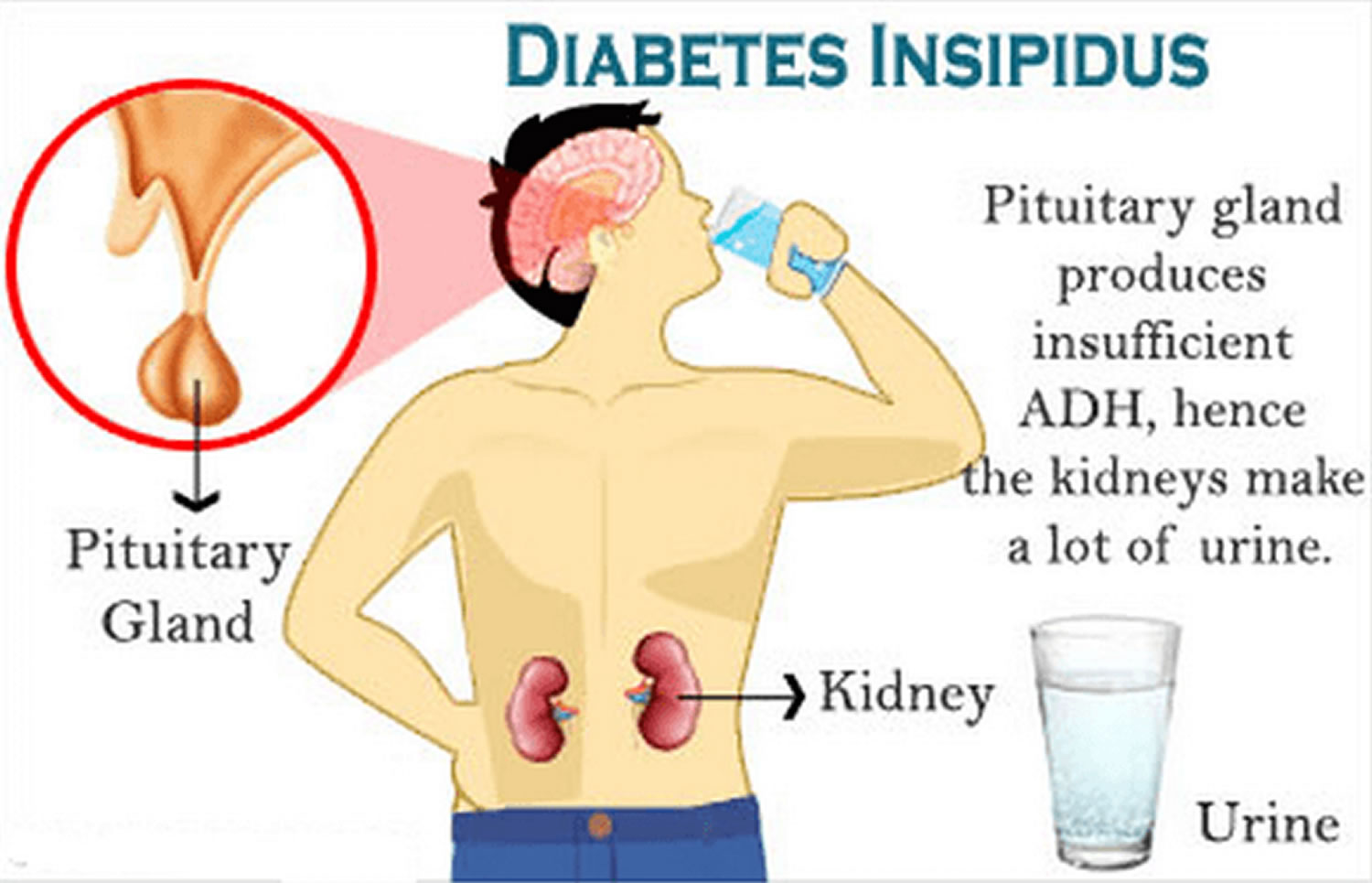
Diabetes Insipidus Causes Symptoms Diagnosis Treatment
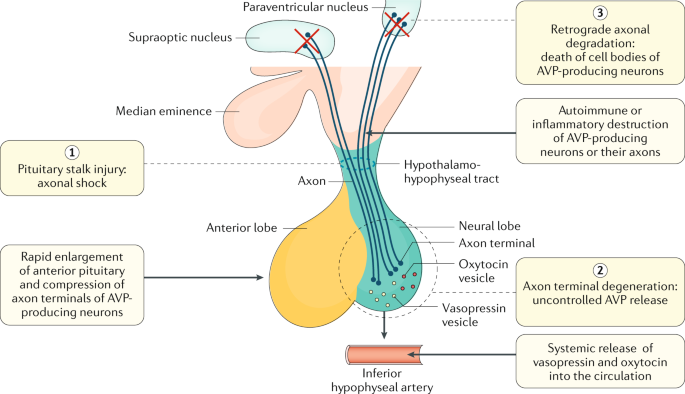
Diabetes Insipidus Nature Reviews Disease Primers
Medical Online Diabetes Insipidus Facebook
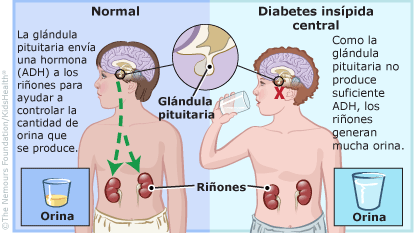
A To Z Diabetes Insipidus Central For Parents Nemours

Diabetes Insipidus Sciencedirect

Diabetes Insipidus Causes Symptoms Diagnosis Treatment Complications
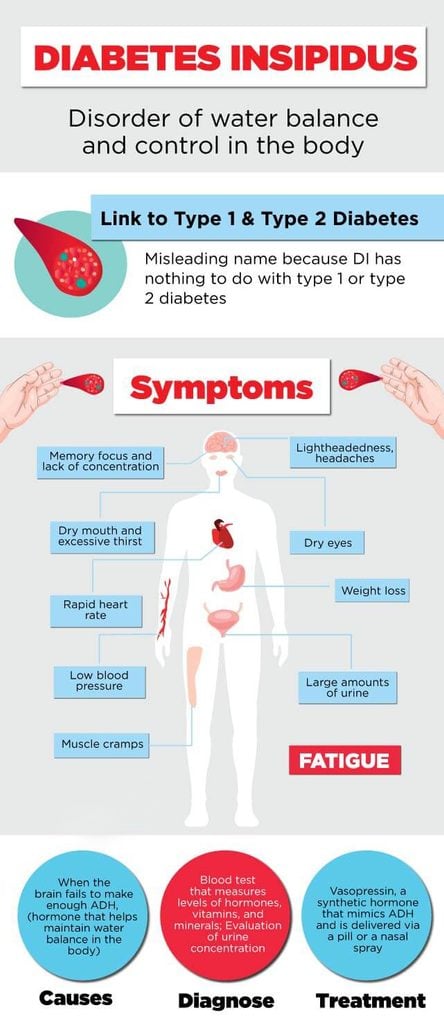
Diabetes Insipidus What You Need To Know The Healthy

Diabetes Insipidus Nursing Process Adpie Osmosis

Diabetes Insipidus In Pregnancy Quigley 2018 The Obstetrician Amp Gynaecologist Wiley Online Library
Dr Toryal Qader Medical Page Diabetes Insipidus Diabetes Insipidus Definition Diabetes Insipidus Is A Polyuric Disorder Resulting From Insufficient Production Of Antidiuretic Hormone Adh Pituitary Neurogenic Diabetes Insipidus Or
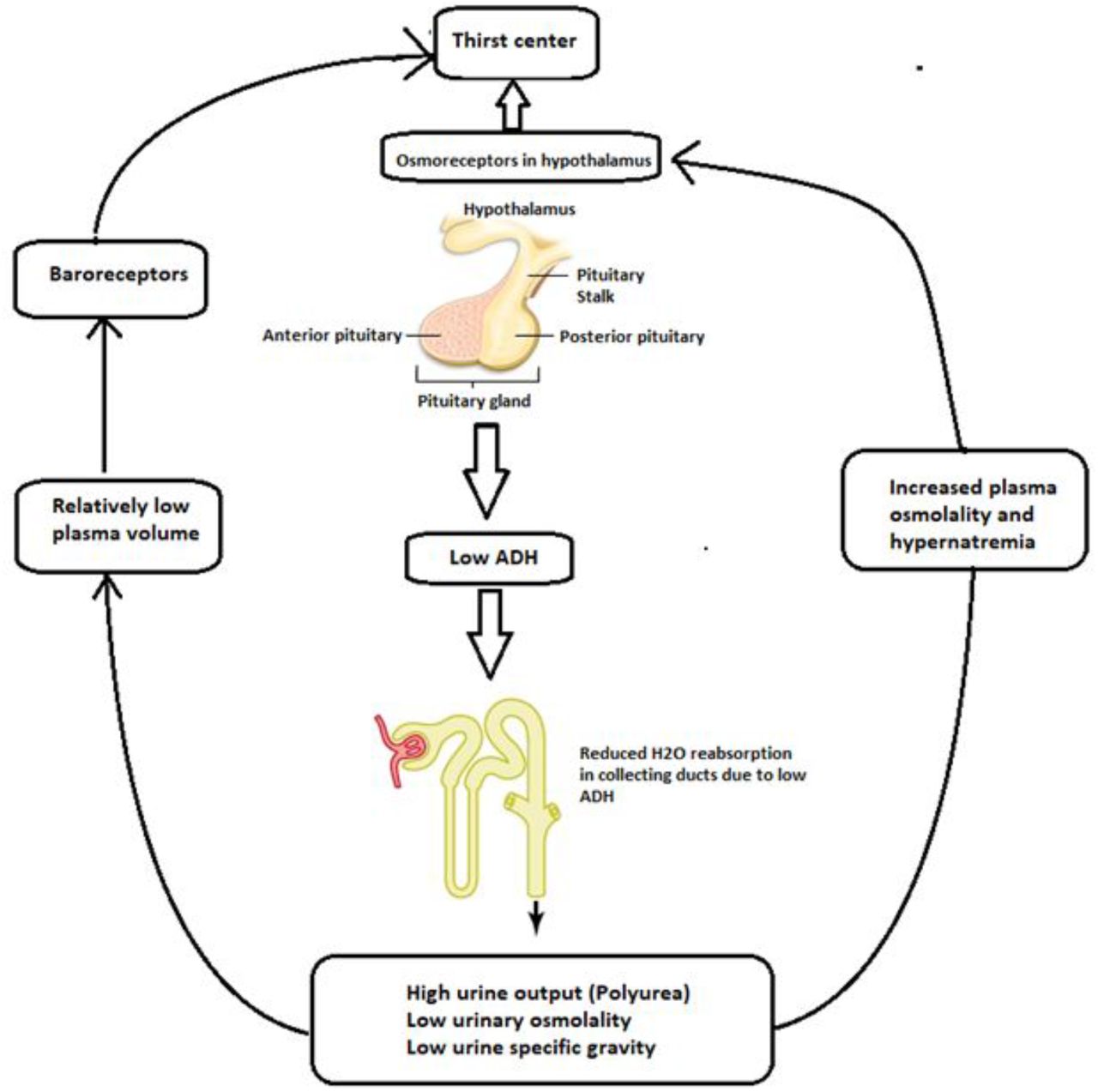
Central Diabetes Insipidus Induced By Temozolomide A Literature Review Medrxiv

Diabetes Insipidus Causes Symptoms And Treatment





Post a Comment
Post a Comment